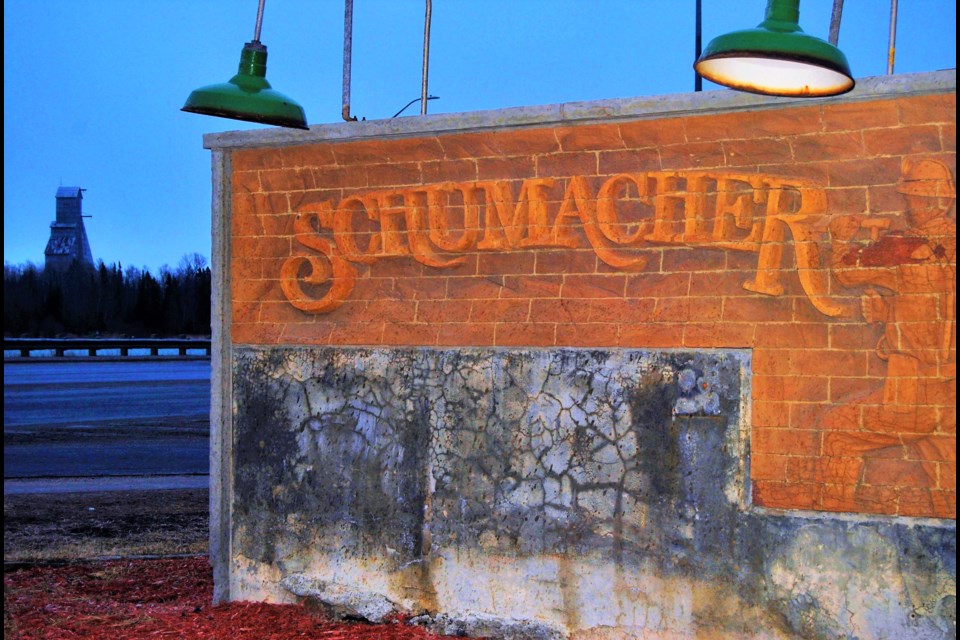Schumacher, until the 1973 amalgamation into the City of Timmins, was its own master, with its own council and town hall.
Highway 101 went right through what is now know as Father Costello Drive, the main street, that is largely devoid of cars, since a major by-pass was built in 1975.
Most drivers prefer to take the faster, more direct Highway 101, past Schumacher. Only those who live in Schumacher or are visiting take the detour through Father Costello Drive.
The town, once known as Aura Lake was the location of many mines during the early days of the Porcupine Gold Rush. Primarily, the McIntyre Mine founded by Sandy McIntyre and the Schumacher Mine founded by Frederick Schumacher of Columbus, Ohio.
The town was renamed after Frederick Schumacher, though he never became a full-time resident of the town bearing his name.
He visited the town often to ensure his mine was running smoothly and to bestow gifts to the children of Schumacher around Christmas time, a generous act for which he became renowned.
But he preferred to live in his palatial home near Columbus, Ohio
Schumacher once had one of the largest Croatian communities in Canada and still boasts of a Croatian Hall on Father Costello Drive and a Croatia Street on which is located the administration building for the District School Board Ontario North East.
Senator Frank Mahovlich is the best-known Croatian-Canadian from Schumacher, where he honed his hockey skills that made him one of the most dynamic, but also most misunderstood hockey superstar of the 1950s, 60s and 70s. He was appointed a senator by Prime Minister Jean Chretien. He is a member of the Hockey Hall of Fame and named to the Order of Canada.
The McIntyre Arena, Coffee Shop, Curling Club and Community centre is one of the most vital buildings in Timmins, Ontario even today.
The complex is home to the Timmins Sports and Heritage Hall of Fame which has been over the last few years rapidly honouring famous athletics from Schumacher, Timmins, South Porcupine and Porcupine.
The Coffee Shop itself is festooned with amazing photographs of great hockey players from the Timmins area.
The arena was built in the late 1930s as a small scale replica of old Toronto Maple Leaf Gardens. J.P. Bickell, long-time manager of the McIntyre Mine was also involved with the Toronto Maple Leafs.
In 2014, Schumacher hosted its homecoming event and invited all residents and former residents where ever they may be to come out and celebrate.
Early in 2017, a public meeting was convened to deal with the threat that Schumacher’s only school would be closed as part of the District School Board North East’s Pupil Accommodation Review Process.
Many from Schumacher believed the closing of the Schumacher Public School would signal the former town’s death knell.
There’s nothing much but the school to attract people to live in Schumacher.
The Schumacher Arts, Culture & Heritage Association (SACHA) which publishes a newsletter titled the Spirit of Schumacher and also organized the 2014 Home Coming was so concerned about the impact of the possible closure of Schumacher Public School, that it prepared an historical document, entitled, Schumacher, Ontario: 60 Years of Ups and 45 Years of Downs, highlighting history from 1912, to the amalgamation in 1973, and right up to the present.
SACHA listed all the main features Schumacher has lost over the last two decades including: the Schumacher High School, Schumacher Lion's Club swimming pool, Schumacher Train Station, Schumacher Public Library, McIntyre Park, municipal buildings and services, St. Francis of Assisi Catholic elementary school, Trinity United Church, St. Chad's Anglican Church, St. Alphonsus Catholic Church and the Timmins Extendicare nursing home.
SACHA also lists the loss of more than 40 businesses from Schumacher's downtown area.
A bit of good news for Schumacher surfaced at DSBONE’s Apr. 18 meeting, when Chair Doug Shearer, indicated Schumacher Public School would not be closed, as it is too important to the Schumacher community.



